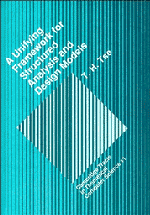 A Unifying Framework for Structured Analysis and Design Models
A Unifying Framework for Structured Analysis and Design Models Published online by Cambridge University Press: 28 January 2010
The specifier constructs a theory and attempts to refute it (hypothetico-deductive) while the knowledge engineer assembles a mass of empirical rules whose verisimilitude is unquestioned (empirico-deductive). The systems engineer, meanwhile, takes the utilitarian approach: if it works, use it.
—Bernard Cohen et al. (1986)There are existing formalisms for description … which are clear and well-understood, but lack the richness typical in descriptions which people find useful. They can serve as a universal basis for description but only in the same sense that a Turing machine can express any computation.
—Terry Winograd (1979)Structured analysis and design methodologies have been recognized as the most popular tools in information systems development (Colter 1982). They are widely accepted by practising systems developers because of the top down nature of the methodologies and the graphical nature of the tools. A complex systems specification can be decomposed into a modular and hierarchical structure which is easily comprehensible. They enable practitioners to visualize the target systems and to communicate with users much more easily than conventional methods.
As a matter of fact, the structured methodologies have been designed by quite a number of distinct authors, each employing a number of models which vary in their in graphical outlook. These include data flow diagrams (DeMarco 1978, Gane and Sarson 1979, McMenamin and Palmer 1984, Weinberg 1980), Jackson structure diagrams, Jackson structure texts (Jackson 1975), system specification diagrams, system implementation diagrams (Cameron 1986, Jackson 1983), Warnier/Orr diagrams (Orr 1977) and structure charts (Page-Jones 1988, Yourdon and Constantine 1979).
To save this book to your Kindle, first ensure [email protected] is added to your Approved Personal Document E-mail List under your Personal Document Settings on the Manage Your Content and Devices page of your Amazon account. Then enter the ‘name’ part of your Kindle email address below. Find out more about saving to your Kindle.
Note you can select to save to either the @free.kindle.com or @kindle.com variations. ‘@free.kindle.com’ emails are free but can only be saved to your device when it is connected to wi-fi. ‘@kindle.com’ emails can be delivered even when you are not connected to wi-fi, but note that service fees apply.
Find out more about the Kindle Personal Document Service.
To save content items to your account, please confirm that you agree to abide by our usage policies. If this is the first time you use this feature, you will be asked to authorise Cambridge Core to connect with your account. Find out more about saving content to Dropbox.
To save content items to your account, please confirm that you agree to abide by our usage policies. If this is the first time you use this feature, you will be asked to authorise Cambridge Core to connect with your account. Find out more about saving content to Google Drive.